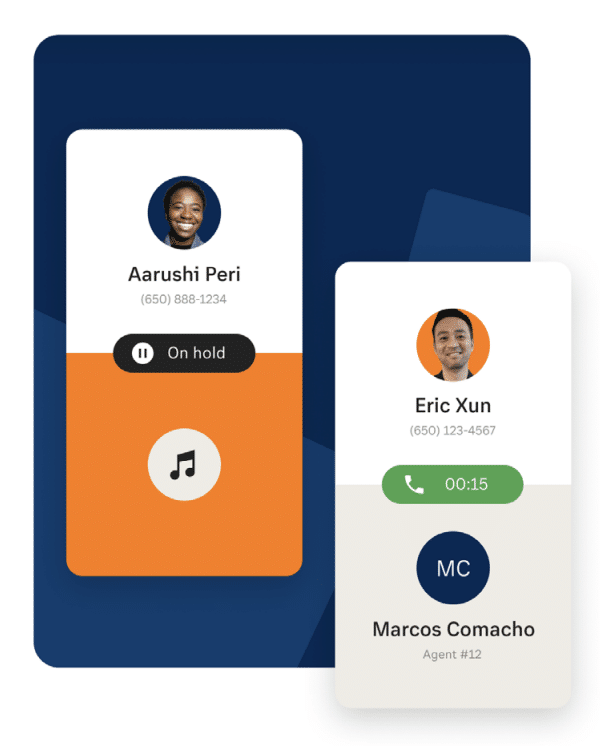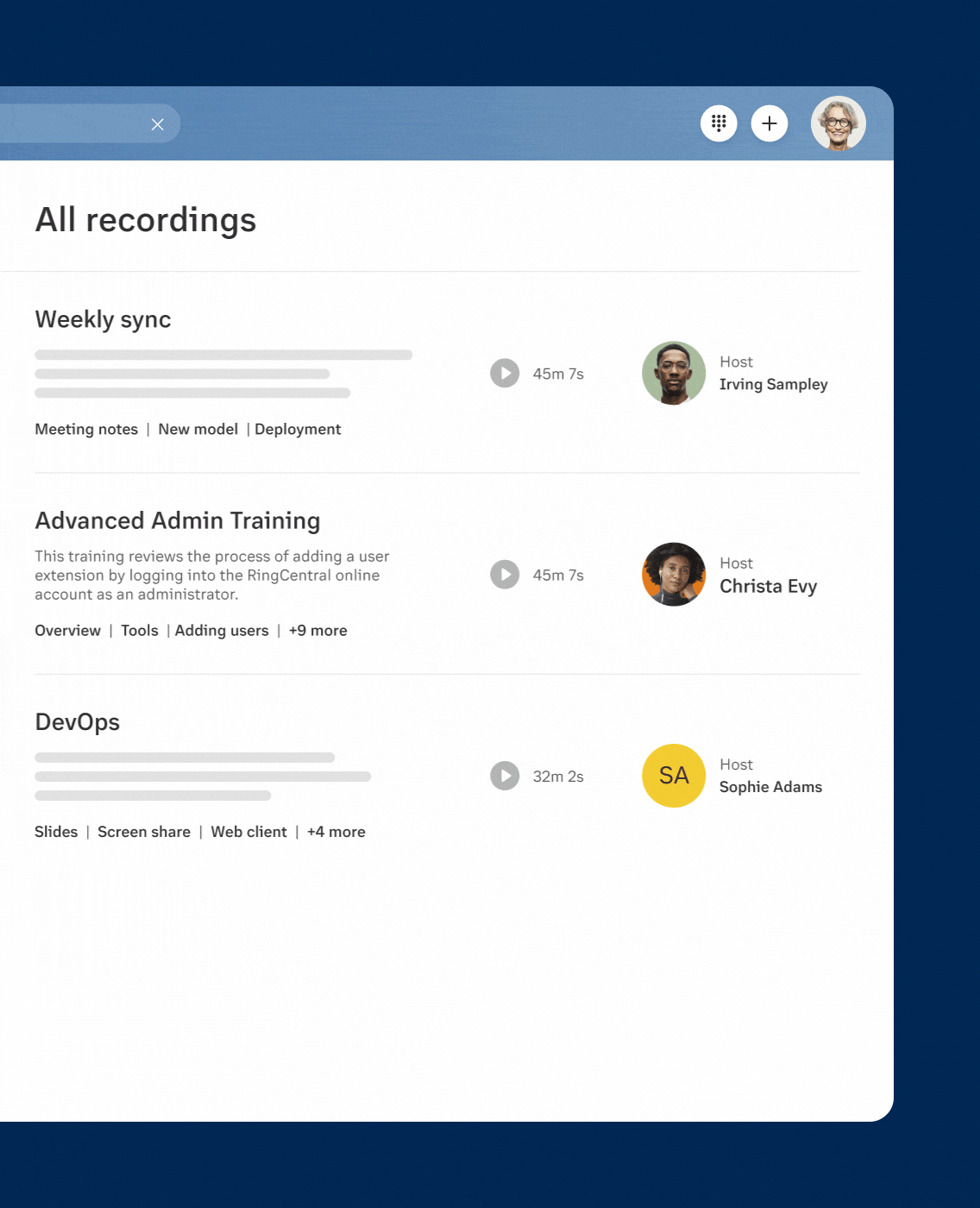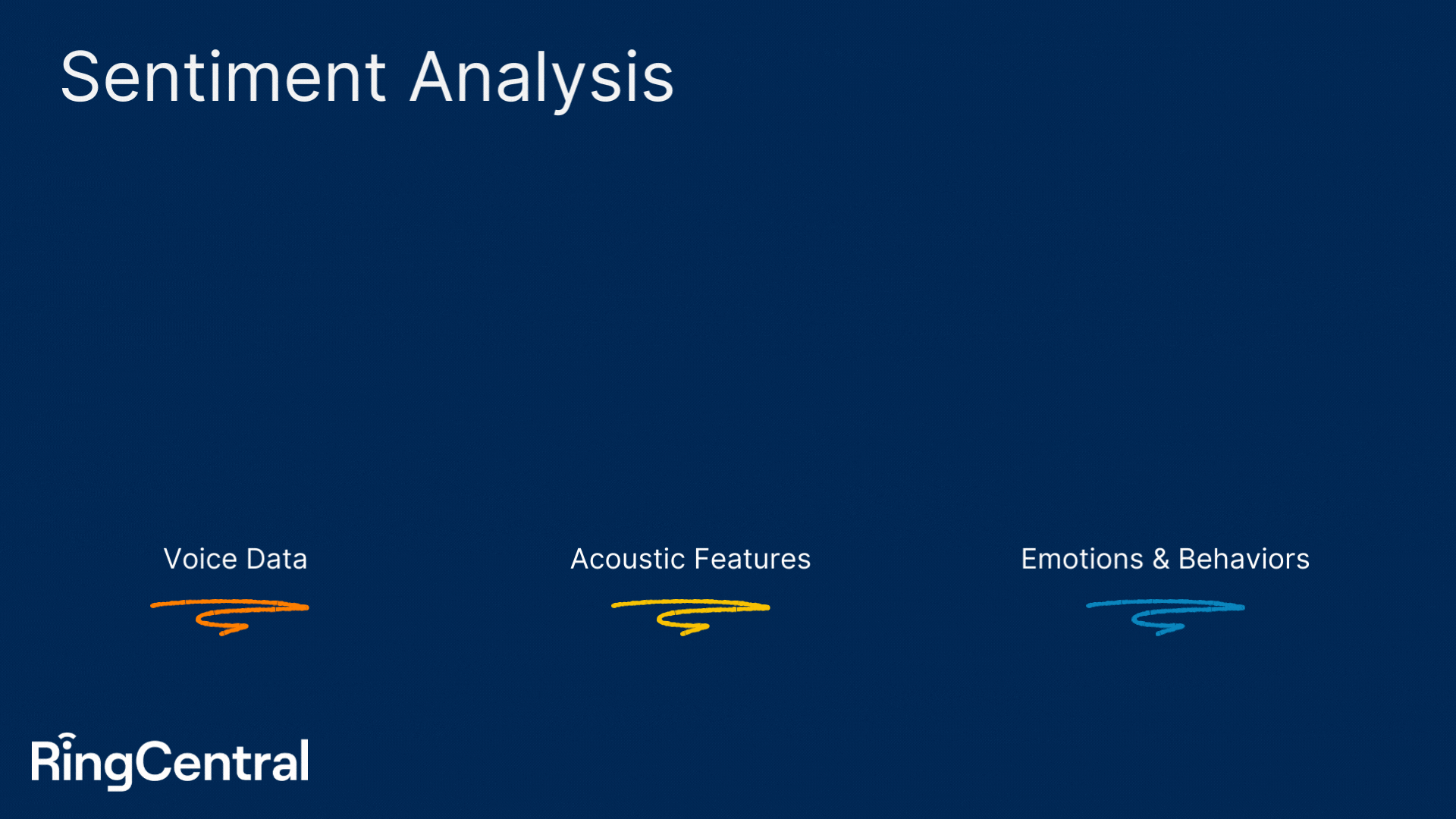More than chatbots: 10 strategies for AI in customer service

AI is all the rage in customer service now. But what are some examples of how this new technology can transform your business?
Consumers are becoming more familiar with—and dependent on—apps and artificial intelligence (AI) tools to help them in their daily lives. According to The Insight Partners, the intelligent virtual assistant market will explode between now and 2028, growing from just over $7 billion to $47.57 billion in just six years.
AI solutions have the power to improve many of your contact center as a service (CCaaS) tasks, but let’s dive into ten specific ways customer service AI can be used to benefit both your agents and your audience’s user experience (UX).
Let’s get into it:
- What is AI customer service?
- 10 ways to use AI in customer service
But first… what is “AI customer service”?
Customer service AI is the use of artificial intelligence within a customer service space. The main way AI assists customer service is through the automation of manual processes: think advanced call routing, chatbots, and other forms of self-service. These automations free up your agents for more crucial tasks.
Conversational AI allows customers to interact with chatbots the way they would with a live service agent. Using machine learning like natural language processing (NLP) and natural language understanding (NLU), AI-enabled bots can serve as full omnichannel virtual agents. Conversation intelligence uses similar technology to analyze conversations for emotion/sentiment, topics, accents, and more.
Gartner predicts that by 2026, conversational customer service AI will reduce contact agent labor and support center costs by $80 billion.
10 ways to use AI in customer service
The possibilities are endless when it comes to AI today. But here are our top 10 examples of AI at work in customer service:
- Alleviate wait times with AI-powered self service
- Improve resolution time AI-powered customer routing
- Analyze work volume for better scheduling
- Move to 24-hour customer service with chat bots
- Coach customer service agents via AI
- Get automated meeting and training summaries for agents
- Improve menu navigation for better customer experiences
- Get regulation-compliant, AI-generated scripts
- Find out how your customers really feel with sentiment analysis
- Go global with AI-powered translation, transcription, and more
1. Alleviate wait times with AI-powered self service
Much of today’s customer satisfaction is based on efficiency and effectiveness. Customers expect immediate service and speedy resolutions to their support issues—the last thing they want is a long wait time to speak with a live agent. Our AI-enabled call center software can move the customer support process along without delay.
AI automation provides customers with a self-service option to find the information they need, in the communication channel of their choice.
Conversational AI-enabled virtual agents can serve as the first point of contact for customers who have an immediate need and reach out via your company’s website. These AI chatbots can also work proactively to take care of your customer needs or make a purchase without human agent interference.
Implementing conversational AI as the first point of contact for customers empowers your agents to focus their workflows on more complex customer questions and cases that have not been resolved by self-service methods. Since routine tasks can be handled by virtual agents, complicated customer queries can get the timely attention they need from live support agents.
2. Improve resolution time AI-powered customer routing

Using AI tools and virtual agents as the first point of contact is just as beneficial for your customer service representatives as it is for your customers. Only complex cases that need a human touch should be routed to a team member—this way, human agents aren’t wasting their time and brain power on routine tasks.
If a customer’s issue isn’t able to be resolved using self-service resources with a virtual agent, AI can continue supporting your contact center by intelligently routing the customer’s case to the best human agent for the task. When customer interactions are routed to live agents, AI equips the agents with:
- The customer’s name
- The customer’s profile
- The customer’s previous interaction history and messaging with your company
- A transcript of the conversation that just took place with the virtual agent—within the transcript, AI includes contextual information along with customer sentiment
Once the customer interacts with a live agent, AI continues to assist by mining the conversation for keywords and phrases a customer speaks or types. AI technology then serves the agent relevant knowledge base articles and resources, providing real-time interaction guidance so your agent can best support your customer’s journey.
Conversational AI also boosts support teams’ productivity and efficiency since it takes many of the more time-consuming tasks off your customer service agents’ hands, leading to an enhanced employee experience. And when your agents are taken care of, they’ll take care of your customers in return.
3. Analyze work volume for better scheduling

“Many organizations are challenged by agent staff shortages and the need to curtail labor expenses, which can represent up to 95% of contact center costs.”
Daniel O’Connell, VP Analyst, Gartner
This might be one of the most hard-hitting examples of how AI can help your business. Labor can represent up to 95% of contact center costs, according to Gartner. In the current economic climate, where businesses are striving to decrease expenses, Conversational AI can help as it:
- Reduces the need for hiring with easy scalability: Virtual agents can easily be deployed during peak seasons with high traffic to help resolve customer issues without adding new employees.This can significantly lower costs as the average cost of hiring a contact center agent is about $31000 per agent
- Increases productivity: Allows live employees to focus on higher-value activities and improve overall organizational productivity.
- Lowers training costs: Ongoing live guidance and customized behavioral coaching lowers coaching and training costs.
Hiring agents is a costly endeavor. According to Colin Taylor of The Taylor Reach Group, Inc., the average cost of hiring a new contact center agent is around $30,751 per employee. However, each contact center operates differently, so this cost isn’t set in stone. To get an idea of what it may cost your support center, consider these expenses tied to hiring a new agent:
- Advertising and marketing for the position
- Screening and background checks
- Onboarding
- Training
- The time it takes for an agent to become proficient; or what Taylor calls “speed to competency” or “speed to green”
- Hardware and call center software
- Physical office space (if applicable)
- Salary and benefits
A Gartner projection further explains how AI is changing the face of customer service: “One in 10 agent interactions will be automated by 2026,” which is an increase from today’s estimated 1.6% of AI-based interactions.
4. Move to 24-hour customer service with chat bots

Customer expectations have risen dramatically in recent years and the rules for customer engagement have changed. Conversational AI, especially chat bots, can help address these changes as follows:
- Improves brand loyalty: 86% of consumers said they would dump a brand they trusted after just two poor experiences. Conversational AI ensures fast, consistent and smart self-service in the customer’s channel and language of choice:.
- Provides smart self-serve options: Intelligent virtual assistants (IVAs) and outreach tools that can understand intent and respond to complex queries allow them to do so effectively across channels. What’s more – these sophisticated tools know what they don’t know and can cleverly route the interaction to the right agent with complete custom context including sentiment when needed.
- Offers always-on service: Reactive, company-centric models with service during “normal business hours” no longer cuts it. Customers demand 24/7/365, smart service that is proactive and customer-centric.
Happy customers stick around, and they tell their friends about positive experiences they’ve had with your company. Adding AI features to your customer service plan could have a real, positive impact on customer retention in an era when customers have more choice than ever.
5. Coach customer service agents via AI

Another example of how AI can revolutionize your customer service team is through real-time coaching. Flexible work environments are now here to stay. Conversational AI provides time-saving and stress-busting tools to employees, irrespective of the work environment, in these ways:
- Reduces manual labor: Repetitive and time-consuming tasks such as filling out forms can now be automated to improve agent experiences and productivity. This results in reduced churn and happier staff.
- Real-time guidance tools: Empower employees with instant knowledge and soft-skill assistance, making interactions far less stressful.
Employee retention is inextricably linked to employee happiness. Incorporating AI into workflows could be a way to reduce the burden and keep your best team members for longer.
6. Get automated meeting and training summaries for agents

There is often so much ground to cover in meetings and training sessions with agents that it’s virtually impossible for reps to retain it all. You can make the content accessible on demand, but the time required for agents to review it is impractical during a typical day.
With top communications solutions, meetings are not only recorded and stored, but AI provides a highlight version of the video. Agents can go through a one-hour session in a matter of minutes to reinforce key messages or training items.
7. Improve menu navigation for better customer experiences

The frustration of navigating through exhausting website or app navigation is one factor that deters customers from using self-service features. AI reduces or eliminates this barrier altogether.
With chatbots, customers can interact more conveniently and efficiently without clicking any buttons. This example of AI is often more inviting for customers using the self-service option.
8. Get regulation-compliant, AI-generated scripts
Regulations for contact centers continue to increase. Some of these requirements impact communication in any industry; others are industry-specific call standards. These regulations put more pressure on contact centers and service agents to ensure compliance.
Regulatory compliance isn’t just a legal issue; it is a customer service issue. Regulations protect consumers from unscrupulous practices. Compliance builds trust. Conversational AI dramatically improves your ability to minimize risks of lawsuits and other penalties for non-compliance.
The conversational AI provides service reps with dynamic scripts that guide interactions while leaving room for flexibility. It also includes legal disclosure checklists so agents know what to share with each customer on every call.
9. Find out how your customers really feel with sentiment analysis

Sentiment analysis is another hot example of how AI can proactively transform your customer service. Interpreting a customer’s emotions in the midst of a virtual call is very challenging for service agents. This point is particularly true in a voice-only interaction.
Conversation intelligence leverages multi-modal emotion recognition to determine core emotions and sentiments from voice. Cues, intensity, and pitch of the customer’s voice all contribute to the AI assessment.
Greater insight into a customer’s sentiment offers tremendous value to agents trying to diffuse problems and detect unspoken concerns.
10. Go global with AI-powered translation, transcription, and more

Supporting a global customer base is difficult for companies that don’t have enough multi-lingual personnel. Advanced AI supports agents and customers through speech recognition and accent detection.
In addition to basic language translation and transcription, AI converts audio into text with extreme accuracy. Reps can follow conversations with non-native English speakers much more effectively when accents impede understanding through voice communication.
This type of global support for language transcription eliminates a lot of frustration for agents and reps by speeding up the communication process.
Put these AI customer service examples to work for your business
Thanks to AI automations in RingCentral’s contact center platform, delivering top-notch customer service is becoming easier than ever.
At RingCentral, we’re always working to streamline and evolve our products and services (and robots). Our goal is to provide your organization with the features and functionality you need to combat communication challenges and elevate both your customers’ and agents’ experience. Start building better CX today—find out how RingCentral’s CCaaS solutions can help.